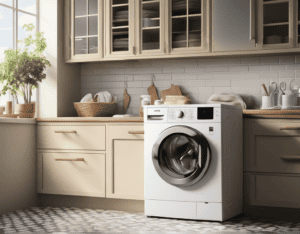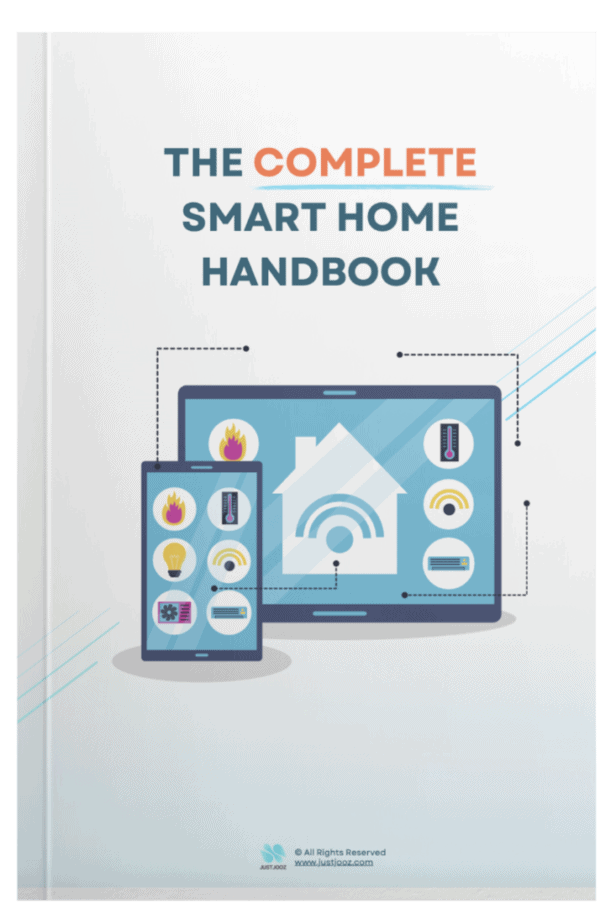How to Install a Washing Machine Drain Hose: Easy Guide!
We’re reader-supported; we may earn a commission from links in this article.
Installing a washing machine drain hose correctly is an essential aspect of setting up your new appliance.
A correctly installed drain hose prevents water leaks and maintains the efficiency of your washing machine.
In this comprehensive DIY guide, we will cover step-by-step instructions that will help you install your washing machine drain hose with ease and confidence.
Let’s dive into the details!
What You’ll Need
Before we start, make sure you have everything you need at hand. Here’s what you’ll require:
- Your washing machine’s drain hose
- Some tape or wire
- A tie strap
- Your trusty toolbox
Got everything? Great! Now, let’s move on to the actual steps.
How to Install a Washing Machine Drain Hose
Here’s the quick rundown:
First, locate the drain hose outlet at the back of your washing machine and attach the new hose securely.
Next, run the other end of the hose to your home’s drain standpipe or laundry sink. Make sure it’s secure but not too tight!
If you are using a standpipe, ensure the hose is inserted no more than 8 inches. Voila! You’re all set!
Here are the specifics on how to install your washing machine drain hose into your washing machine:
Step 1: Know Your Machine
Every washing machine model is unique, so the first step is to familiarize yourself with your specific appliance.
Check out the manual, identify the drain hose outlet, and get a sense of how everything works.
Step 2: Insert the Drain Hose
Next, insert the end of the washer drain hose into the standpipe.
Ensure it goes no more than 8 inches in — this ensures the water drains properly and doesn’t cause flooding.
Step 3: Secure the Hose
With the drain hose in place, it’s time to secure it. Use your tape, wire, or a tie strap to secure the drain hose to the standpipe.
This step is essential to prevent any unexpected ‘waterworks’ from happening mid-cycle.
Step 4: Check Your Drainage
If your machine drains to a laundry sink or trough, you’ll need to adjust your setup accordingly. Make sure the end of the drain hose is securely placed over the edge of the sink and fasten it tightly to prevent slipping.
And voila! You’ve successfully installed your washing machine drain hose. 🎉
Remember, always refer to your appliance’s manual when in doubt. It’s your best friend in this process and will provide model-specific tips that can be really handy.
Conclusion
In conclusion, installing a washing machine drain hose might seem like a daunting task, but with some preparation and the right tools, it can be done quite easily.
By following these step-by-step instructions, you can ensure your washing machine is functioning correctly and efficiently.
Always remember to refer back to your machine’s manual for any specific instructions related to your model. With everything correctly installed, you are now ready for a smooth and hassle-free laundry experience.
Congratulations on successfully setting up your washing machine drain hose!
Frequently Asked Questions (FAQs)
What is a washing machine drain hose?
A washing machine drain hose is a flexible pipe connected to the washing machine and used to drain the dirty water from the machine after the wash cycle.
It’s crucial since it ensures water is expelled from your machine efficiently and safely.
The drain hose links the washing machine to your home’s plumbing system through a standpipe or directly into a laundry sink.
What if my hose is too short to reach the standpipe?
If your drain hose is too short to reach the standpipe, you can purchase a drain hose extension kit from a home improvement store.
Ensure that you follow the instructions provided with the kit to install it correctly.
Do I need any special tools to install a washing machine drain hose?
Generally, you will not need any special tools to install a washing machine drain hose.
Some tape or wire, a tie strap, and your regular toolbox should be sufficient. However, always refer to your washing machine’s manual for specific instructions.
How often should I check my washing machine drain hose?
It is recommended to check your washing machine drain hose at least once a year to ensure it is functioning correctly and is not clogged or leaking.
Regular maintenance can extend the life of your appliance and prevent any major issues.
Can I install a washing machine drain hose on my own?
Yes, following the step-by-step guide above, you should be able to install a washing machine drain hose by yourself.
However, if you encounter any difficulties or are unsure of any steps, it’s always best to consult a professional.
Can a washing machine drain into a sink?
Yes, if a standpipe is not available, your washing machine can drain into a laundry sink or trough.
Make sure the end of the drain hose is securely placed over the edge of the sink and fastened tightly to prevent slipping.
What happens if the washing machine hose is installed incorrectly?
If your washing machine hose is installed incorrectly, it can lead to water leakage and potential flooding.
The water drained from your washing machine won’t flow properly, causing it to spill over. Always ensure that your hose is properly secured to prevent such issues.
How do I know if my drain hose needs replacing?
If your washing machine is not draining properly, or if there are visible signs of wear and tear on the hose, such as cracks or blisters, it might be time to replace your drain hose.
Occasionally, blockages can also occur which may necessitate a replacement.
Is there a specific type of tape or wire I should use to secure the drain hose?
There isn’t a specific type of tape or wire that needs to be used.
However, it should be sturdy and water-resistant. Standard duct tape or a strong zip tie are commonly used options that you can consider.
Can I use my washing machine while I’m waiting for a replacement hose?
If your washing machine drain hose is leaking or not functioning correctly, it’s best to avoid using your washing machine until the replacement hose is installed.
Constant usage could lead to further damage or potential flooding in your laundry area.
What should I do if the drain hose keeps slipping out of the standpipe?
If your drain hose keeps slipping out of the standpipe, it might not be secured properly.
Try using a hose clamp or zip tie to secure the hose to the standpipe. If the problem persists, you may need to consider getting a professional to look at it.

Justin Chia
Justin is the author of Justjooz and is a data analyst and AI expert. He is also a Nanyang Technological University (NTU) alumni, majoring in Biological Sciences.
He regularly posts AI and analytics content on LinkedIn, and writes a weekly newsletter, The Juicer, on AI, analytics, tech, and personal development.
To unwind, Justin enjoys gaming and reading.






